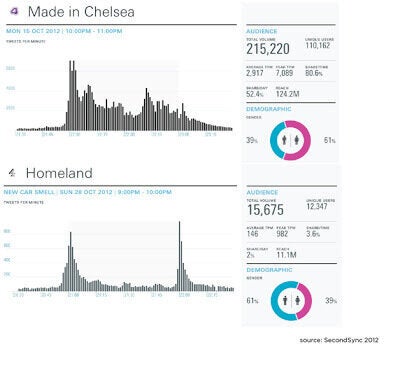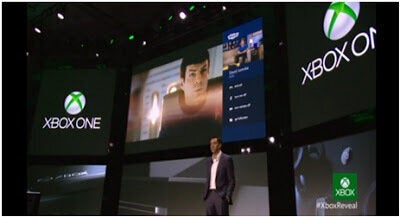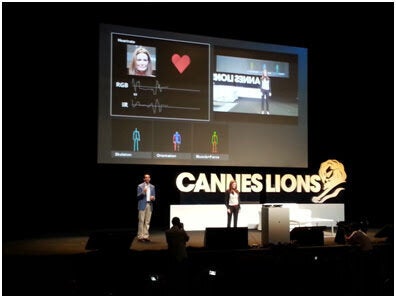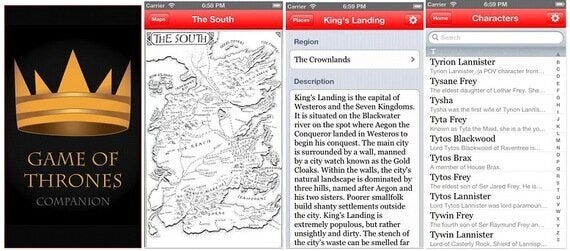For decades, TV has had a prosperous reign as king of the living room. Entertaining millions daily, it's no wonder we've given the medium ultimate reverence. But just as a monarch's underlings often seek to usurp them, tablets and mobile devices are rising up and gradually stealing attention from TV's once captive and faithful audience. With viewers' attentions become increasingly split across multiple devices we can question whether the concept of the "1st screen" is as concrete as it used to be. And with dramatic progressions in the entertainment ecosystem looming, what does the future look like for the "2nd screen?"
First is Real Time
Recently in Sainsburys Crawford, Ms Jo Clarke was refused service at the till until she ended the conversation she was having on her mobile phone[1]. Separately to the ensuing media sh*tstorm over the validity of the employee's request, Ms Clarke's behaviour perfectly portrayed the "multitasking" culture we now live in. With smartphone and tablet penetration ever increasing[2] and being used more so in the home than anywhere else[3] this social norm is most prevalent in conjunction with TV viewing. But is this multiscreening behaviour what we perceive it to be, and what does this mean for marketers?
An example of TV "multitasking" behaviour would be watching X Factor, tweeting about the show on your phone, Facebook chatting to friends on your tablet whilst talking to whoever's in the room. In reality however, whilst doing all these things at once may feel like multitasking, where at least one act is not automatous and requires some level of concentration[4], our brains physically cannot focus on more than one thing at once[5]. Instead our attention flits between stimuli, only focusing on one thing at a time.
The importance of this from an advertising perspective is not to be underestimated, as such behaviour can mean that budget spent on reaching an audience may hit them whilst their attention is focused elsewhere, rendering the spot/impression worthless[6]. What's key in successfully overcoming this[7], is recognition of the specific audience's flitting behaviour during the planned TV spots, and cultivating cross platform experiences to engage them.
For example, we can see that different TV programmes yield different viewing behaviours. Lighter entertainment that's geared towards creating conversations - such as Made in Chelsea - typically gains tweets throughout the show, whereas more engaging shows - such as Homeland - tend to retain attention moreso during the show itself, with conversation during ads and bookending the programme.

Twitter Interaction During Programmes
Beyond the fact that we need to plan media smarter in order to reach and engage audiences, the key point is that due to this flitting behaviour , at present there isn't a definitive "1st screen." This is currently a fluid and real time concept, and one that agencies need to be acutely aware of in order to reach viewers/users at that moment. But with a multi-screen ecosystem that's just developed to this point, will this remain? With developing tech we can expect devices and software to encourage become more intertwined, but could they eventually merge back into one?
Single Multi-Screening
In recognition of the heavy use of consoles as entertainment platforms[8], Xbox recently unveiled their Xbox One to the world. Having showcased a wide array of impressive features that reflect their aims of making TV the "central hub for multi-screen entertainment," [9] from a multi-screen perspective the main thing that stood out was Snap Mode.
In a nutshell, this allows users to fully utilise 2 screens at once, side by side on their TV screen via voice recognition. Whilst obviously a better experience on bigger screens, the possibility of browsing the internet, Tweeting, Skyping, accessing e-mail etc without shifting attention or action from the singular TV screen has potentially enormous opportunities and ramifications attached to it.

Example of opening a Skype Conversation whilst watching Star Trek
A nice demonstration (that unfortunately I didn't take a picture of) was of watching a basketball game live on ESPN. If you are part of a Fantasy League, during the game you can be notified of any points and position changes in your team and league, able to go and amend your team, and even comment or share socially with others in your fantasy league. All through vocal interaction with your TV, and all with the game still on the screen[10].
As we're seeing with Samsung's Air Gesture and Apple's Siri on mobile devices, all digital experiences are moving towards a more humanistic method of interaction. Whilst the above is very much a showcase example, it exhibits the slick, deeper way of TV viewing that we can expect to see with this new technology. As the quality and functionality of Xbox's voice recognition progresses to be in line with what's now a fantastic offering with Kinect - as well as 3rd party developer involvement[11] we can also expect this to change the role of mobile and tablet devices in this environment[12].

Kinnect being displayed to be able to pick up skeletal movement, weight transfer, force, and even heart rate
Take the highly rated Game of Thrones Companion app for example. Whilst at the moment viewers flit to their mobile device to improve their viewing experience of the show, in the future this app will be within the TV itself, voice/gesture controlled. As we migrate towards this state[13], we can expect supplementary screens to be used more for controling in-TV app interactions, as well as continue to act as a vehicle to store content and mobilise their TV experience outside of the living room. So whilst mobile and tablet devices will still have a significant role in building deeper levels of engagement with TV, it will be more as a facilitator of a TV centric experience than as the hub for interactions.

Screenshots of the Game of Thrones Companion App
Conclusion
Whilst we're currently in a position where TVs are a key screen in the living room, the way we interact with them doesn't make them necessarily the "1st screen". However as SMART and Connected technology progresses we can expect to return to a TV centric era - as before smartphones. With the resultant change in how mobile and tablet devices are used to supplement TV viewing, we will need to ensure we are acutely aware of viewing behaviours, and position ourselves to deliver the deeper experiences that TV users will expect.
References
[1] http://metro.co.uk/2013/07/03/sainsburys-says-sorry-to-customer-refused-service-at-checkout-until-she-stopped-talking-on-her-mobile-phone-3867024/
[2] NewMedia TrendWAtch, 29th June, http://www.newmediatrendwatch.com/markets-by-country/18-uk/154-mobile-devices
[3] Slightly outdated article (2011), but statistics have remained fairly consistent. http://www.ccsinsight.com/press/company-news/1435-home-usage-dominates-as-qsofa-surfersq-and-qbedroom-browsersq-drive-early-tablet-adoption
[4] For example, we can cop carrots and talk at the same time as chopping is a learned physical act, however we can't read and think about something else with any real level of success.
[5] http://www.forbes.com/sites/douglasmerrill/2012/08/17/why-multitasking-doesnt-work/
[6] This is an ongoing struggle with digital activity's movement towards paying only for "in-view" activity - i.e. not merely when an ad has rendered on a page but when it is in view on a users' screen - though their attention may still be elsewhere.
[7] And potentially creating deeper brand experiences
[8] Entertainment usage surpassing gaming usage in 2012. Reported at http://www.gamezone.com/news/2012/03/27/xbox-360-entertainment-app-usage-surpasses-online-gaming
[9] Yusuf Mehdi, "Beyond the Device: How Entertainment is Becoming More Personal", Cannes Lions Seminar, Wed 19th, 2013.
[10] Though to be noted this was within a specifically designed app.
[11] If Twitter aren't creating voice recognition Tweets to take advantage of this they should be.
[12] Though the multi-view nature of TV means that to avoid interrupting and annoying other viewers' experience apps like this won't be used all the time.
[13] Until voice recognition is fully up to scratch.
